Afiya Ayman
Task Grouping for Automated Multi-Task Machine Learning via Task Affinity Prediction
Oct 24, 2023Abstract:When a number of similar tasks have to be learned simultaneously, multi-task learning (MTL) models can attain significantly higher accuracy than single-task learning (STL) models. However, the advantage of MTL depends on various factors, such as the similarity of the tasks, the sizes of the datasets, and so on; in fact, some tasks might not benefit from MTL and may even incur a loss of accuracy compared to STL. Hence, the question arises: which tasks should be learned together? Domain experts can attempt to group tasks together following intuition, experience, and best practices, but manual grouping can be labor-intensive and far from optimal. In this paper, we propose a novel automated approach for task grouping. First, we study the affinity of tasks for MTL using four benchmark datasets that have been used extensively in the MTL literature, focusing on neural network-based MTL models. We identify inherent task features and STL characteristics that can help us to predict whether a group of tasks should be learned together using MTL or if they should be learned independently using STL. Building on this predictor, we introduce a randomized search algorithm, which employs the predictor to minimize the number of MTL trainings performed during the search for task groups. We demonstrate on the four benchmark datasets that our predictor-driven search approach can find better task groupings than existing baseline approaches.
Artificial Intelligence for Smart Transportation
Aug 14, 2023Abstract:There are more than 7,000 public transit agencies in the U.S. (and many more private agencies), and together, they are responsible for serving 60 billion passenger miles each year. A well-functioning transit system fosters the growth and expansion of businesses, distributes social and economic benefits, and links the capabilities of community members, thereby enhancing what they can accomplish as a society. Since affordable public transit services are the backbones of many communities, this work investigates ways in which Artificial Intelligence (AI) can improve efficiency and increase utilization from the perspective of transit agencies. This book chapter discusses the primary requirements, objectives, and challenges related to the design of AI-driven smart transportation systems. We focus on three major topics. First, we discuss data sources and data. Second, we provide an overview of how AI can aid decision-making with a focus on transportation. Lastly, we discuss computational problems in the transportation domain and AI approaches to these problems.
Minimizing Energy Use of Mixed-Fleet Public Transit for Fixed-Route Service
Apr 10, 2020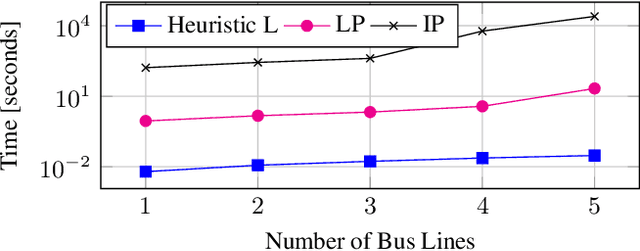
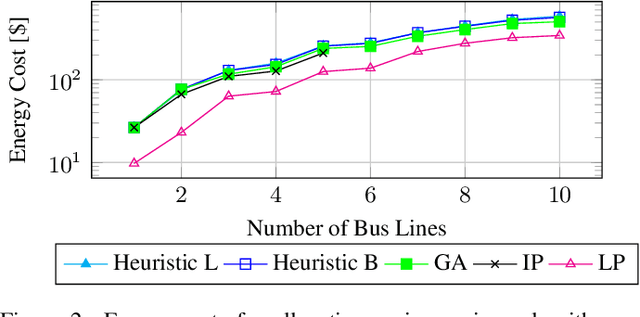
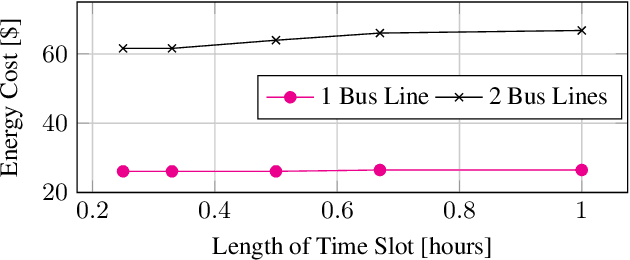
Abstract:Public transit can have significantly lower environmental impact than personal vehicles; however, it still uses a substantial amount of energy, causing air pollution and greenhouse gas emission. While electric vehicles (EVs) can reduce energy use, most public transit agencies have to employ them in combination with conventional, internal-combustion engine vehicles due to the high upfront costs of EVs. To make the best use of such a mixed fleet of vehicles, transit agencies need to optimize route assignments and charging schedules, which presents a challenging problem for large public transit networks. We introduce a novel problem formulation to minimize fuel and electricity use by assigning vehicles to transit trips and scheduling them for charging while serving an existing fixed-route transit schedule. We present an integer program for optimal discrete-time scheduling, and we propose polynomial-time heuristic algorithms and a genetic algorithm for finding solutions for larger networks. We evaluate our algorithms on the transit service of a mid-size U.S. city using operational data collected from public transit vehicles. Our results show that the proposed algorithms are scalable and achieve near-minimum energy use.
Data-Driven Prediction of Route-Level Energy Use for Mixed-Vehicle Transit Fleets
Apr 10, 2020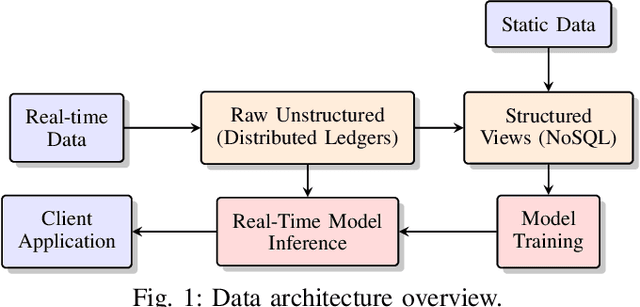


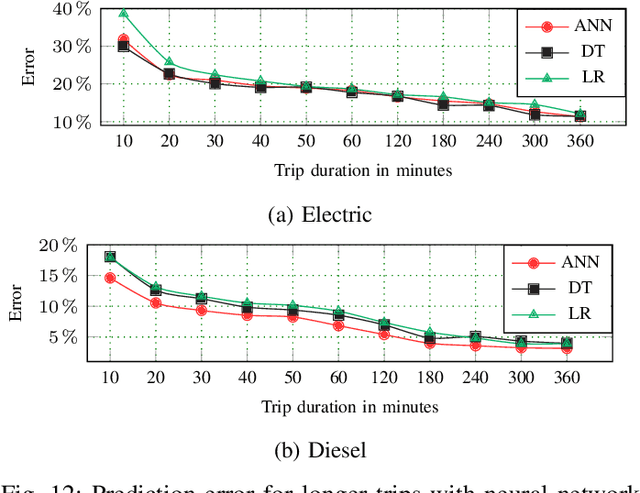
Abstract:Due to increasing concerns about environmental impact, operating costs, and energy security, public transit agencies are seeking to reduce their fuel use by employing electric vehicles (EVs). However, because of the high upfront cost of EVs, most agencies can afford only mixed fleets of internal-combustion and electric vehicles. Making the best use of these mixed fleets presents a challenge for agencies since optimizing the assignment of vehicles to transit routes, scheduling charging, etc. require accurate predictions of electricity and fuel use. Recent advances in sensor-based technologies, data analytics, and machine learning enable remedying this situation; however, to the best of our knowledge, there exists no framework that would integrate all relevant data into a route-level prediction model for public transit. In this paper, we present a novel framework for the data-driven prediction of route-level energy use for mixed-vehicle transit fleets, which we evaluate using data collected from the bus fleet of CARTA, the public transit authority of Chattanooga, TN. We present a data collection and storage framework, which we use to capture system-level data, including traffic and weather conditions, and high-frequency vehicle-level data, including location traces, fuel or electricity use, etc. We present domain-specific methods and algorithms for integrating and cleansing data from various sources, including street and elevation maps. Finally, we train and evaluate machine learning models, including deep neural networks, decision trees, and linear regression, on our integrated dataset. Our results show that neural networks provide accurate estimates, while other models can help us discover relations between energy use and factors such as road and weather conditions.
 Add to Chrome
Add to Chrome Add to Firefox
Add to Firefox Add to Edge
Add to Edge